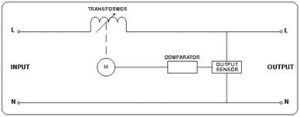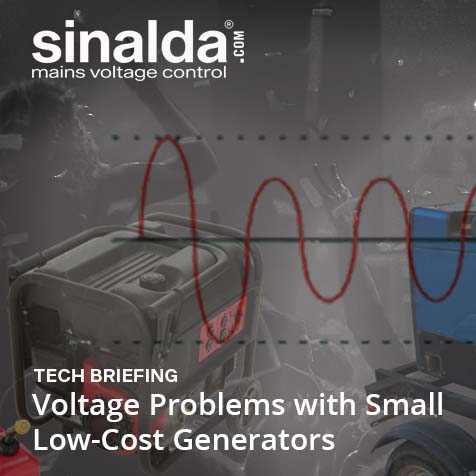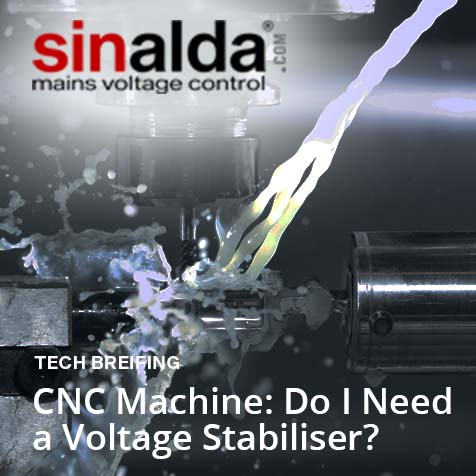High copper prices have a great impact on power cable prices, especially for larger sized cables having long runs. Prices have sky-rocketed over the last few years and it is with this in mind that Sinalda (UK) developed a product to “compensate” for the problem.
Many owners, developers and contractors have to suffer this expensive problem, but by incorporating a “Constant Voltage Compensator” an installation cost may be drastically reduced.

Schematic Diagram of the Constant Voltage Compensator
The above schematic represents a single phase configuration with L (Live) and N (Neutral) as the Input and Output on the each end respectively.
For three phase systems it is similar, but with the other two phases having the same configuration so that all three phase voltages may be boosted individually, according to their required values.
Delta/ three wire systems may be accommodated but it is essential to state this at the time of ordering.
When the voltage across a cable drops to a low value, the “Compensator” is able to detect this and compensate by boosting the voltage to a preset value – of say 400V. Using an “output sensor” it will continuously monitor the output voltage, which is checked against a “comparator”, and if there is any shortfall it will instruct the transformer to add (+) or “boost” the voltage to its required value by means of a servo motor. In this way, the output voltage is continuously monitored and maintained.
This system does not emit any harmonics and has been a well proven design, in use for many years.
The “Compensator” is very suitable for use on Golf Course Lighting/Equipment, Perimeter Lighting applications and Farm/Estate Buildings etc. where long cable runs are an issue.
Both Indoor and Outdoor enclosure types are available to suit a variety of needs.
Alternative “Booster Transformers” have a main disadvantage as their output voltage is “following”. This means that whatever the input voltage, the “transformed step-up” output voltage will not remain constant – fluctuating according to any load changes which will transmit to the load where it may be too high or too low. The voltage from no-load to full-load will cause the voltage drop to change drastically, which will not help improve the voltage drop. The “less than 4% volt drop window” is still not fulfilled and it is required to use a larger than necessary cable size.
In fact, this does not help resolve the problem of expensive cables!




